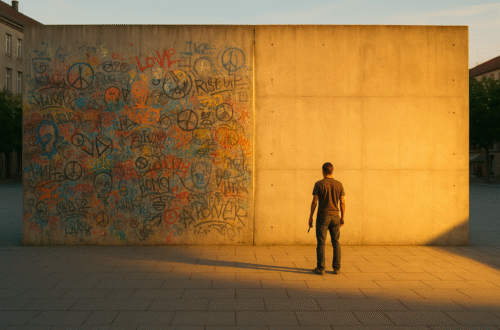There is, I think, a peculiar wonder in the way human beings make marks upon the world. A line scratched in charcoal, a splash of colour across a canvas, the deliberate disorder of a collage—these gestures are not merely aesthetic; they are declarations. They are cries, whispers, challenges, invitations. In their quiet, unassuming way, artworks assert something profound: “Here I am. I have thought, I have felt, and I demand to be acknowledged.”
Art, in this sense, is a form of speech, though not the sort of speech we might encounter in parliaments or courtrooms. It is a speech that bypasses the linearity of logic, the constraints of grammar, and the exactitude of law. It appeals to our imagination, to our capacity for empathy, to that strange interior theatre in which ideas take on life beyond the mind that conceived them. And herein lies the tension that so often excites debate: art is utterly free in its manner, and yet utterly potent in its consequences.
One may be tempted to argue that art is frivolous, that a society can survive without murals, sculptures, or experimental installations. Perhaps so. Yet if we consider the history of human thought, one realizes that our greatest moral, political, and philosophical awakenings have often arrived via unexpected, almost playful, channels. Art can soften the rigid edges of argument; it can present moral conundrums not as abstract puzzles but as living dilemmas. A painting can confront us with injustice more persuasively than a treatise; a song can stir conscience more quickly than a law.
It is because art is inherently human that it is inevitably controversial. To paint, to sculpt, to perform, is to assert a vision of the world that may diverge from the familiar, the comfortable, or the socially sanctioned. It challenges the collective gaze, forces the public to reckon with perspectives that might otherwise remain invisible. And in doing so, it becomes a barometer of freedom. A society that tolerates—or better, celebrates—dissenting art is, almost by definition, a society that honours liberty itself.
Yet we must acknowledge a paradox. The very liberty that allows art to flourish also exposes it to misunderstanding, criticism, and, on occasion, censure. The artist, in asserting a vision, invites not only applause but rebuke; indeed, the more audacious the work, the more certain it is to provoke. And this is not a failing of the artwork but a testament to its vitality. To disturb, to unsettle, to spark reflection—these are not flaws but features of a society in which freedom is real rather than performative.
Consider, for a moment, the intimacy of this exchange between artist and audience. The work does not simply exist; it exists for us. It seeks our attention, our contemplation, our judgment. In that sense, art is democratic: it presumes the capacity of each observer to think, to feel, to discern. It is a conversation across time and space, between maker and witness, each shaping the meaning as much as the other. And in such a dialogue, liberty is both medium and message.
To live among art is to live consciously, to recognise that human imagination is a sacred terrain that must neither be coerced nor extinguished. Every mural, every installation, every improvisational performance carries with it a lesson in humility: the lesson that the world is not only what we inherit, but also what we dare to create. And in that daring lies the essence of freedom itself—not simply the freedom to act, but the freedom to conceive, to challenge, to speak without apology.
So, as we ponder the works that stir our admiration, or our discomfort, let us remember that art matters precisely because it is at once intimate and communal, personal and political, ephemeral and enduring. To dismiss it is to deny a dimension of our humanity; to censor it is to constrict the very imagination that sustains us. And to embrace it—even imperfectly, even with hesitation—is to participate in the ongoing, exhilarating, and sometimes unsettling conversation that defines a free society.
Art asks nothing less than that we remain awake, attentive, and willing to be moved. In attending, we exercise our liberty. In being moved, we encounter our own capacity to think, to judge, and to live freely. And this, perhaps, is why the canvas of liberty demands not merely our respect, but our imagination, our courage, and, above all, our presence.





